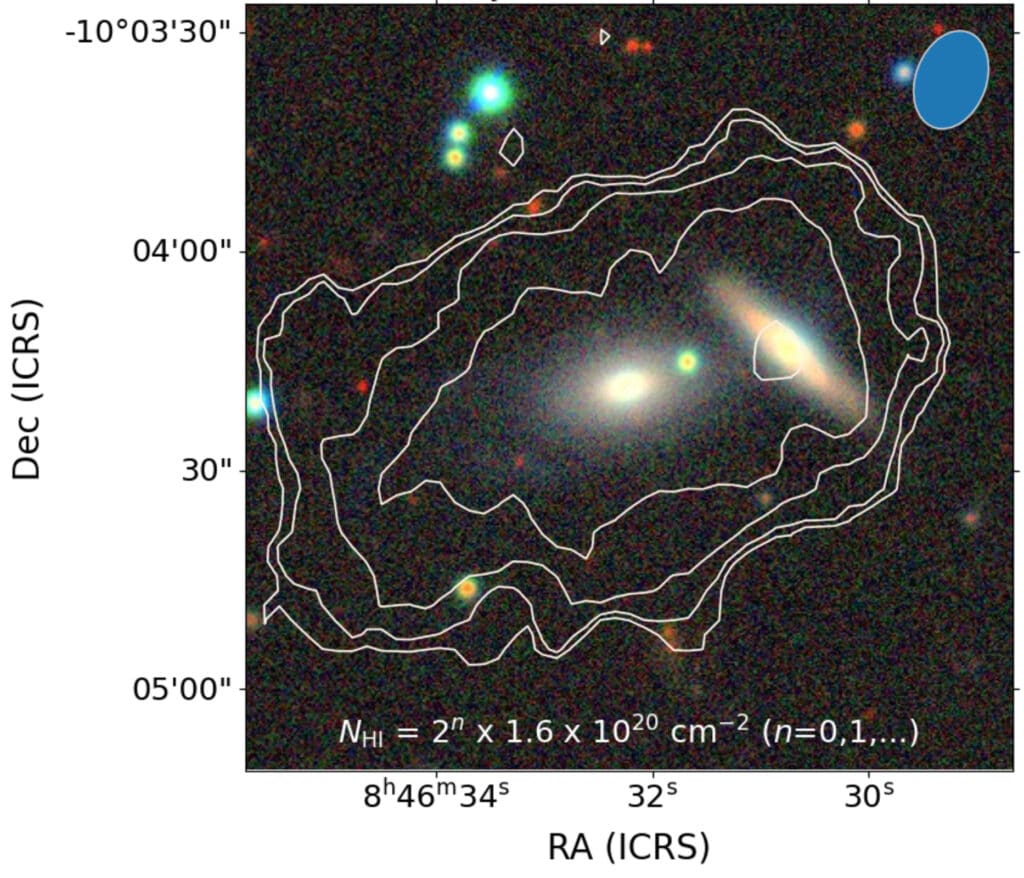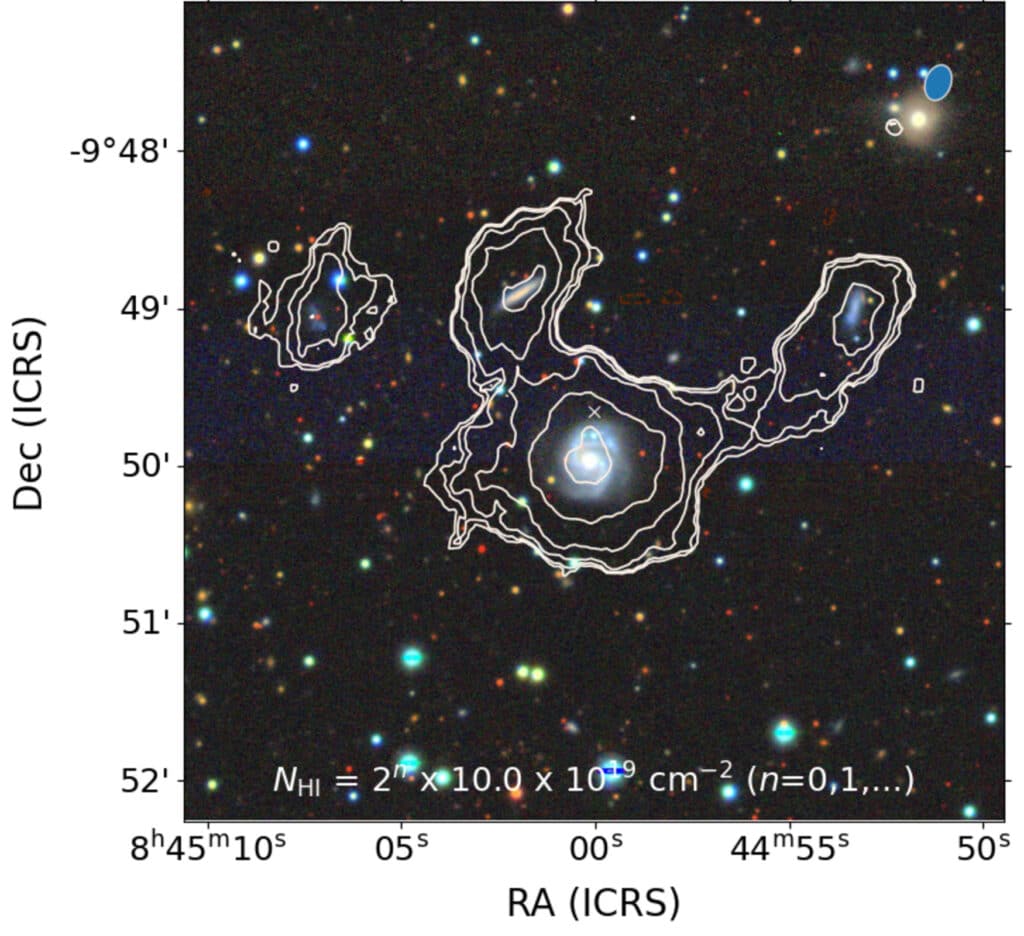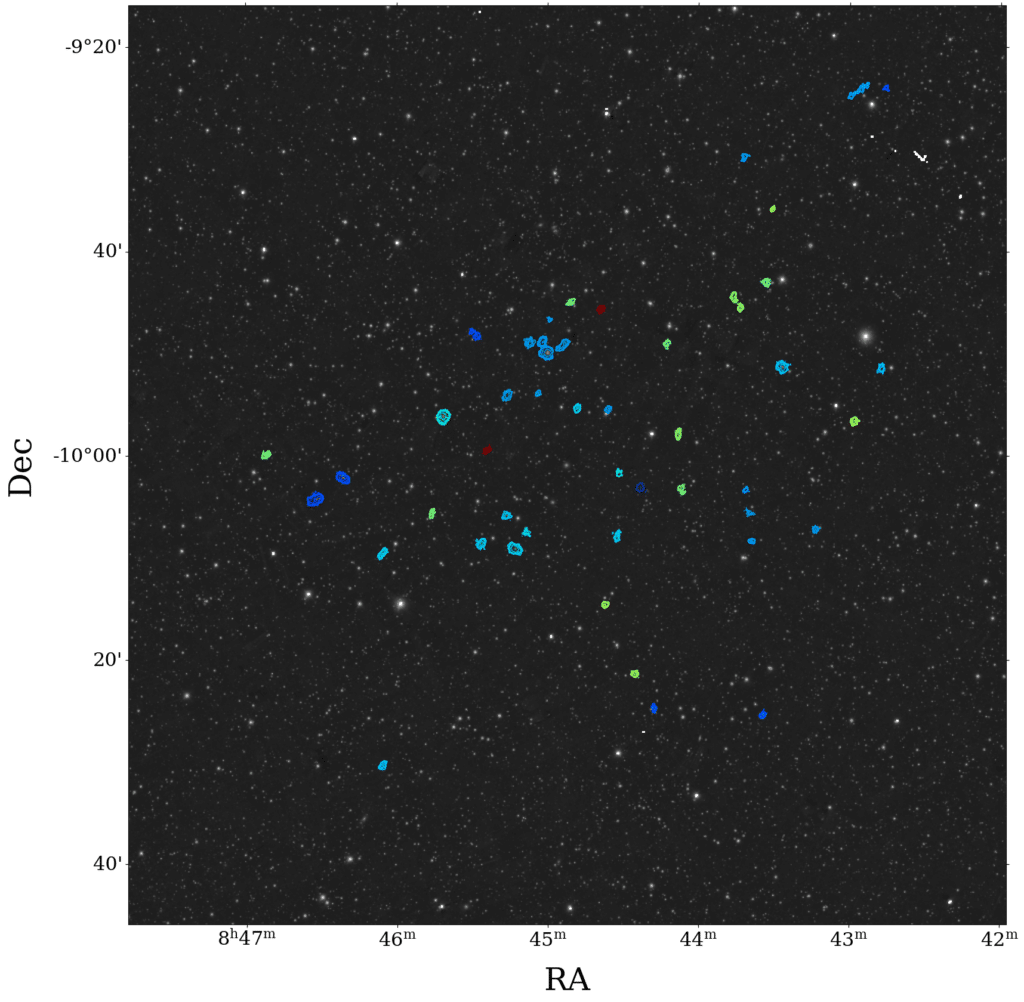What do scientists do when they have a few hours to kill? They discover dozens of new galaxies! In under three hours, a team of international astronomers uncovered 49 new gas-rich galaxies using the MeerKAT radio telescope in South Africa.
The research, led by Dr. Marcin Glowacki from the Curtin University node of the International Center for Radio Astronomy Research (ICRAR) in Western Australia, initially aimed to study the star-forming gas in a single radio galaxy. However, while inspecting the data, Dr. Glowacki stumbled upon something unexpected: instead of finding star-forming gas in the target galaxy, he discovered 49 entirely new galaxies.

“I did not expect to find almost fifty new galaxies in such a short time,” says Dr. Glowacki in a media release. “By implementing different techniques for finding galaxies, which are used for other MeerKAT surveys, we were able to detect all of these galaxies and reveal their gas content.”
These newly found galaxies have been informally nicknamed the “49ers,” paying homage to the California gold rush miners of 1849. Just as the miners sought valuable gold nuggets, Dr. Glowacki sees these galaxies as precious treasures in our night sky.
Finding these gas-rich galaxies is significant because gas plays a crucial role in the formation of stars. Stars are born within massive clouds of gas and dust, and understanding the distribution and properties of this gas helps astronomers unravel the mysteries of galaxy formation and evolution.
Among the 49 new galaxies, many were found to be in close proximity to each other, forming galaxy groups. In one particular observation, three galaxies were identified as being directly connected by their gas.
“These three are particularly interesting, as by studying the galaxies at other wavelengths of light, we discovered the central galaxy is forming many stars,” explains Dr. Glowacki. “It is likely stealing the gas from its companion galaxies to fuel its star formation, which may lead the other two to become inactive.”
This phenomenon, known as galactic cannibalism, occurs when a larger galaxy gravitationally attracts and consumes the gas and stars of smaller, neighboring galaxies. This process can greatly impact the evolution of galaxies, as the larger galaxy gains mass and resources while the smaller galaxies are stripped of their gas and may eventually become inactive. A recent study revealed that approximately one in 12 stars have shown evidence of consuming planets or planetary debris.
“This discovery highlights the raw power of the MeerKAT telescope as an imaging instrument,” notes study co-author Ed Elson, professor at the University of the Western Cape. “The methods we developed and implemented to study the 49ers will be useful for MeerKAT large science surveys, and smaller observing campaigns such as ours.”

The discovery of the 49ers was not a one-off event. Recently, Jasmine White, an ICRAR summer student working with Dr. Glowacki, helped identify even more gas-rich galaxies in other short observations made by MeerKAT. This suggests that there may be many more hidden treasures waiting to be uncovered in the vast expanse of our universe.
“We hope to continue our studies and share even more discoveries of new gas-rich galaxies with the wider community soon,” concludes Dr. Glowacki.












